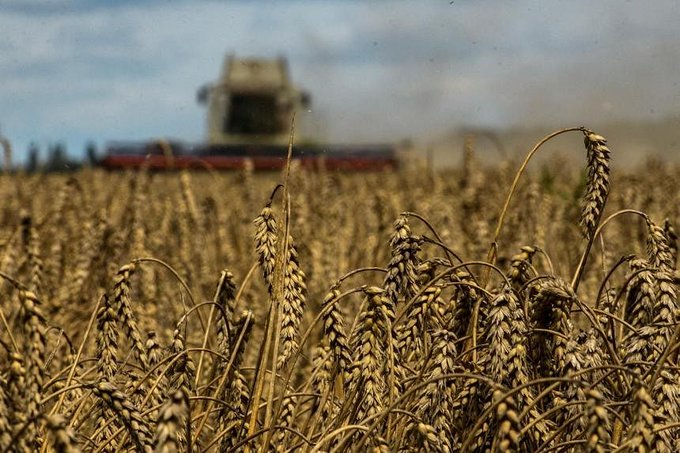|
Getting your Trinity Audio player ready…
|
Global warming is likely to boost crop yields in some countries, helped in part by higher carbon dioxide (CO2) levels, which increases plant growth and helps them become more efficient in using water.
The results may seem hopeful, given the current surge in food prices globally.
But there’s a catch – despite higher yields, future global wheat price spikes are set to become more severe, a recent study by an international team of researchers found.
They found that in high-latitude areas such as the United States, northern China, and parts of Australia, wheat yields will increase slightly overall in a world that is 2 deg C warmer than in pre-industrial times.
The study, led by Professor Zhang Tianyi, an agrometeorologist at the Institute of Atmospheric Physics at the Chinese Academy of Sciences in Beijing, focuses on what may happen to wheat production globally, and also global prices for the grain.
An agrometeorologist looks at the relationship between weather and climate to crop and livestock production and soil management.
Prof Zhang’s team looked at not only predicted wheat yields in a 2 deg C world, but also the impact of climate change on wheat prices and the global wheat market. For example, which nations would benefit from higher yields, and which nations would face falling yields and depend more on imports?
The team found that higher CO2 levels would lead to a 1.7 percent increase in global mean yield under 2 deg C warming, relative to the present-day climate. Prof Zhang explained that this means higher grain output per hectare.
High temperatures hurt wheat yields, but higher CO2 levels can offset this, the authors said in the study published in the journal One Earth. Plants need CO2 as part of photosynthesis to make sugars. More CO2 tends to boost plant productivity, at least up to a point, they said.
But increases in global yield do not necessarily result in lower consumer prices, the authors found. Computer modelling results suggest that global wheat price spikes would become higher and more frequent. This is because wheat yields are projected to increase in high-latitude wheat exporting countries, but decrease in low-latitude wheat importing countries, such as India and parts of Africa, including Egypt.
This would lead to higher prices in importing nations.
Based on the findings of Prof Zhang’s team, a 2 deg C world would lead to higher international demand for wheat and higher consumer prices in the importing countries.
To calculate the results, the team divided the world into 51 socio-economic regions, including not only the major wheat-producing countries, but also the important exporting and importing countries in each continent.
Prof Zhang explained that the team ran complex computer models simulating a large number of wheat-growing seasons that mimicked all combinations of climate stresses at present climate conditions and for a 2 deg C warmer climate.
The data from these two climate ensembles were then added to separate wheat yield and economic models.
Prof Zhang told The Straits Times that the results “suggest that increased self-sufficiency is key for staple food-importing countries under future climate change stresses and trade regimes. Several policies, such as increased arable lands, adjusting farming structure and more grain stocks, will improve food security for these countries”.
Trade liberalisation policies need careful consideration. A warmer world could stabilise, or even improve farmers’ income in wheat-exporting countries, but would reduce income for farmers in wheat-importing countries.
Other recent studies have also looked at ways to enhance wheat yields in a hotter future.
In Australia, the world’s sixth-highest exporter of the grain in 2020, shifting to earlier crop sowing windows, breeding varieties for enhanced drought and heat tolerance, in addition to CO2 fertilisation, can improve yields and resilience. A warmer world also reduces the risks from frost damage.
Dr Pep Canadell, executive director of the Global Carbon Project and who was not involved in the wheat study, told ST: “All computer models have a strong CO2 fertilisation effect, such as crop models, forest models, et cetera. So we expect that CO2 alone will lead to – and has led to – higher crop yields.
“Warming in high latitudes can also lead to increased crop yields, but across the world, warming tends to have a negative effect and partially offset the positive effects of CO2.”
The Global Carbon Project is an international scientific collaboration that looks at global carbon trends, from fossil fuel emissions to CO2 absorption from nature.
“For Australia, on average, wheat yield has largely remained constant. This is the result of advancements in wheat cropping and varieties offsetting what would have been a decline in yield due to climate change. You can view this as having to run to stay in the same place,” Dr Canadell said.
Source: The Strait Times
